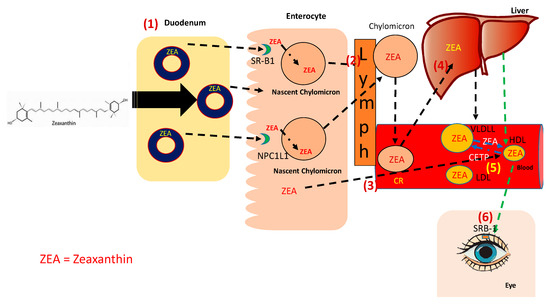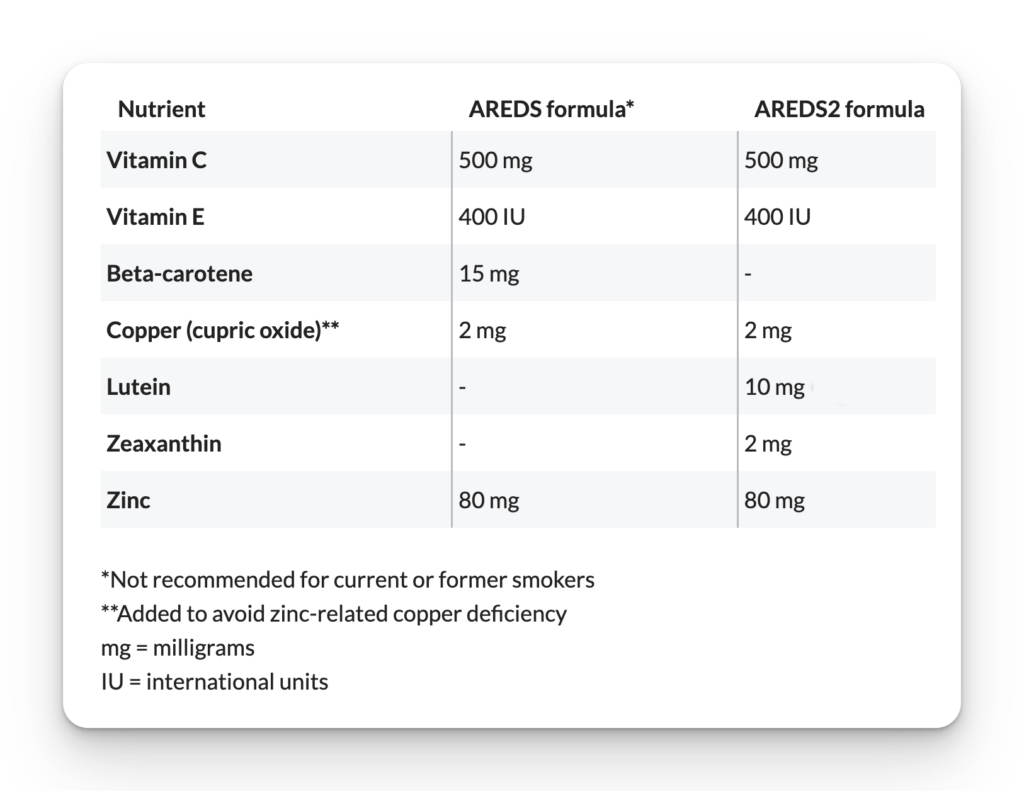What are the benefits of meso-zeaxanthin for eyes?
When it comes to supporting optimal eye health, certain nutrients and antioxidants stand out for their ability to protect your vision. One such nutrient is meso-zeaxanthin, a carotenoid that plays a crucial role in maintaining healthy eyesight. But what is meso-zeaxanthin, and why is it important for your eyes?
In this blog, we will explore what meso-zeaxanthin is, where it comes from, how it differs from other carotenoids, and whether it is necessary for your overall eye health. Additionally, we’ll discuss which foods may contain meso-zeaxanthin and the best way to incorporate it into your diet or supplementation routine.
What is meso-zeaxanthin?
Meso-zeaxanthin is one of three carotenoids present in the macula – the area at the centre of the retina that is responsible for clear, detailed central vision. These carotenoids – lutein, zeaxanthin, and meso-zeaxanthin – form a protective layer, absorbing harmful blue light and reducing oxidative stress.
Unlike lutein and zeaxanthin, meso-zeaxanthin is synthesised directly within the retina, primarily through the conversion of lutein from our diets. Meso-zeaxanthin cannot typically be obtained through food sources alone. Hence, many people choose to use meso-zeaxanthin supplements to ensure they have enough of this vital nutrient to protect their vision.

What is the Difference Between Zeaxanthin and Meso-Zeaxanthin?
A common question that arises is: What is the difference between zeaxanthin and meso-zeaxanthin? Both carotenoids are crucial for maintaining eye health, but they are slightly different in their origin and function. Zeaxanthin is primarily obtained from the diet through foods like corn, orange peppers, and leafy greens, while meso-zeaxanthin is not commonly found in most foods. Instead, meso-zeaxanthin is synthesised in the retina from dietary lutein.
In terms of function, both zeaxanthin and meso-zeaxanthin contribute to filtering blue light and protecting the macula, but meso-zeaxanthin is concentrated in the very centre of the macula, where it provides protection to the most vulnerable part of the retina. Together with lutein and zeaxanthin, these three carotenoids work synergistically to provide comprehensive protection for your vision.

Is Meso-Zeaxanthin Necessary for Eye Health?
The next important question is: Is meso-zeaxanthin necessary? While meso-zeaxanthin is not as well-known as lutein and zeaxanthin, its role in eye health is equally important. Research suggests that meso-zeaxanthin is critical for protecting the central part of the macula, where the need for filtering blue light and oxidative protection is greatest. For individuals at risk of developing age-related macular degeneration (AMD), including meso-zeaxanthin in your diet or supplement routine can be particularly beneficial in slowing the progression of the disease.
Given its unique position in the macula, many experts believe that meso-zeaxanthin is necessary for comprehensive protection against blue light and oxidative stress, particularly in people at high risk for macular degeneration or those already showing signs of AMD.

How much meso-zeaxanthin should you take?
When it comes to meso-zeaxanthin supplements, the recommended dosage can vary based on individual needs and lifestyle. However, for general eye health, experts typically recommend a daily intake of 10 mg of meso-zeaxanthin, along with other macular carotenoids, to support optimal macular pigment density.
Before beginning any supplement regimen, it’s advisable to speak with an eye health professional, especially if you’re considering meso-zeaxanthin supplements for AMD or other specific eye conditions.

Conclusion
Meso-zeaxanthin powder is a lesser-known but essential carotenoid that plays a crucial role in maintaining optimal eye health by protecting the macula from harmful light and oxidative damage. While what is meso-zeaxanthin and where does it come from are important questions, understanding how it differs from other carotenoids like zeaxanthin and knowing the limited dietary sources are equally important for making informed choices about your eye health.
Sources
Hirsch J, Curcio CA. The spatial resolution capacity of human foveal retina. Vision Res. 1989;29:1095–1101. doi: 10.1016/0042-6989(89)90058-8. [DOI] [PubMed] [Google Scholar]
Bone RA, Landrum JT, Friedes LM, Gomez CM, Kilburn MD, Menendez E, et al. Distribution of lutein and zeaxanthin stereoisomers in the human retina. Exp Eye Res. 1997;64:211–218. doi: 10.1006/exer.1996.0210. [DOI] [PubMed] [Google Scholar]
Khachik F, Bernstein PS, Garland DL. Identification of lutein and zeaxanthin oxidation products in human and monkey retinas. Invest Ophthalmol Vis Sci. 1997;38:1802–1811. [PubMed] [Google Scholar]
Snodderly DM, Brown PK, Delori FC, Auran JD. The macular pigment.1. absorbance spectra, localization, and discrimination from other yellow pigments in primate retinas. Invest Ophthalmol Vis Sci. 1984;25:660–673. [PubMed] [Google Scholar]
Nolan JM, Loughman J, Akkali MC, Stack J, Scanlon G, Davison P, et al. The impact of macular pigment augmentation on visual performance in normal subjects: COMPASS. Vision Res. 2011;51 (5:459–469. doi: 10.1016/j.visres.2010.12.016. [DOI] [PubMed] [Google Scholar]
Send Inquiry
Related Industry Knowledge
- Activated Charcoal Benefits for Stomach
- What is Blue Spirulina & What Are Its Benefits
- Exploring NMN Powder: Benefits and Usage
- Beetroot Red: The Nutritional Powerhouse You Need
- Lactoferrin: What It Is and Why It Matters for Your Health
- What is Carmine Powder? A Complete Guide to the Natural Red Pigment
- Mind and Body Benefits of Lions Mane Powder
- Is chlorophyll healthy?
- Is marine or bovine collagen better for hair growth?
- Lion's Mane Benefits for Brain Health


